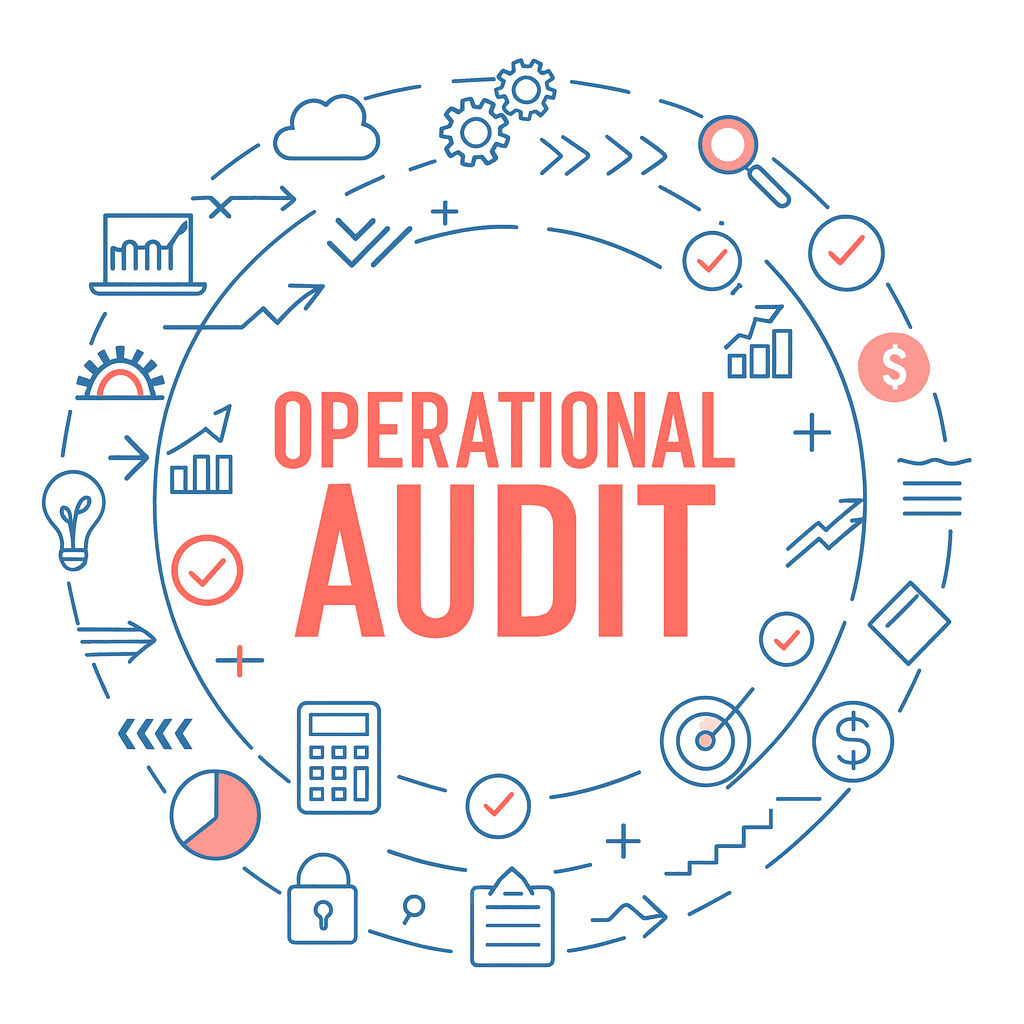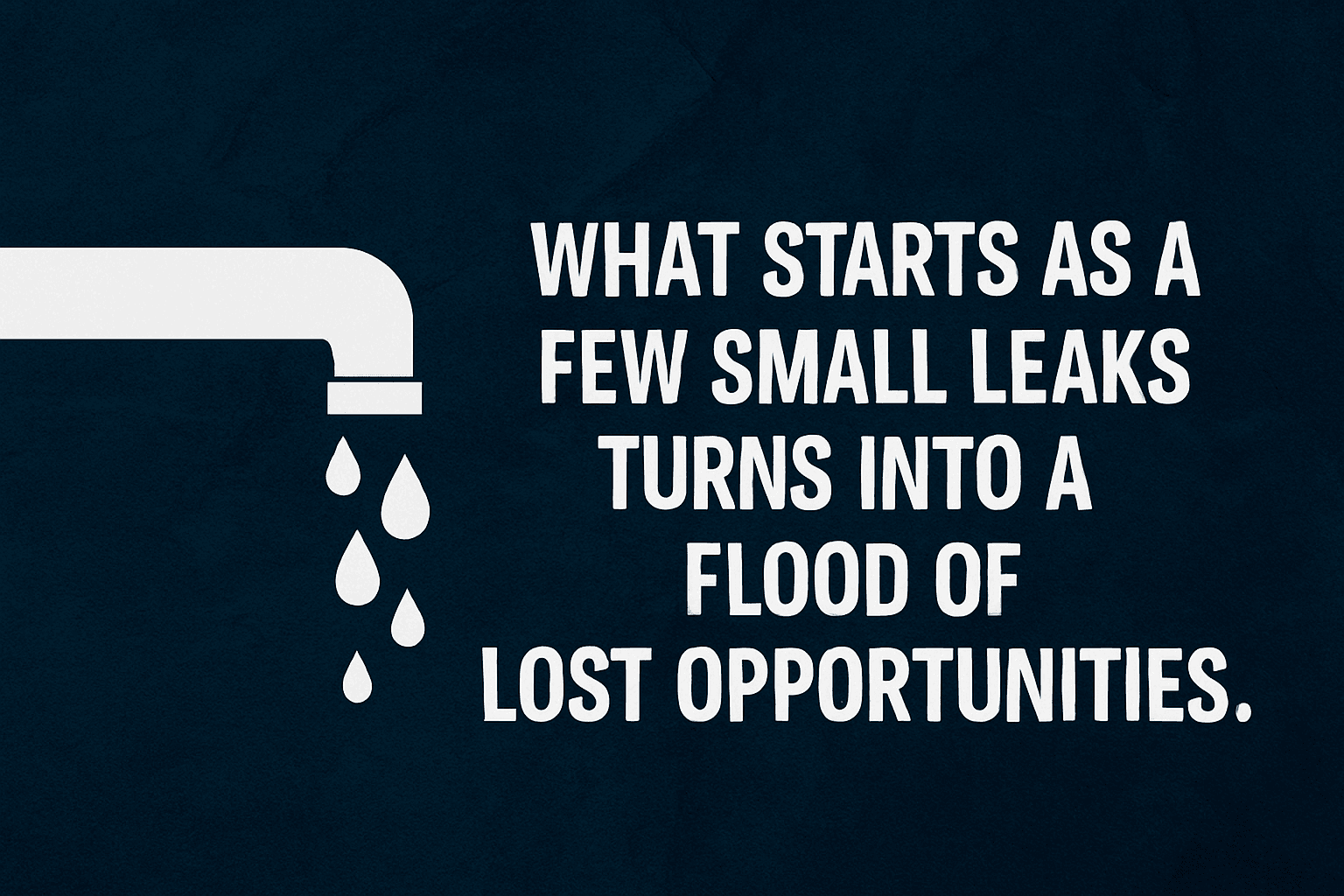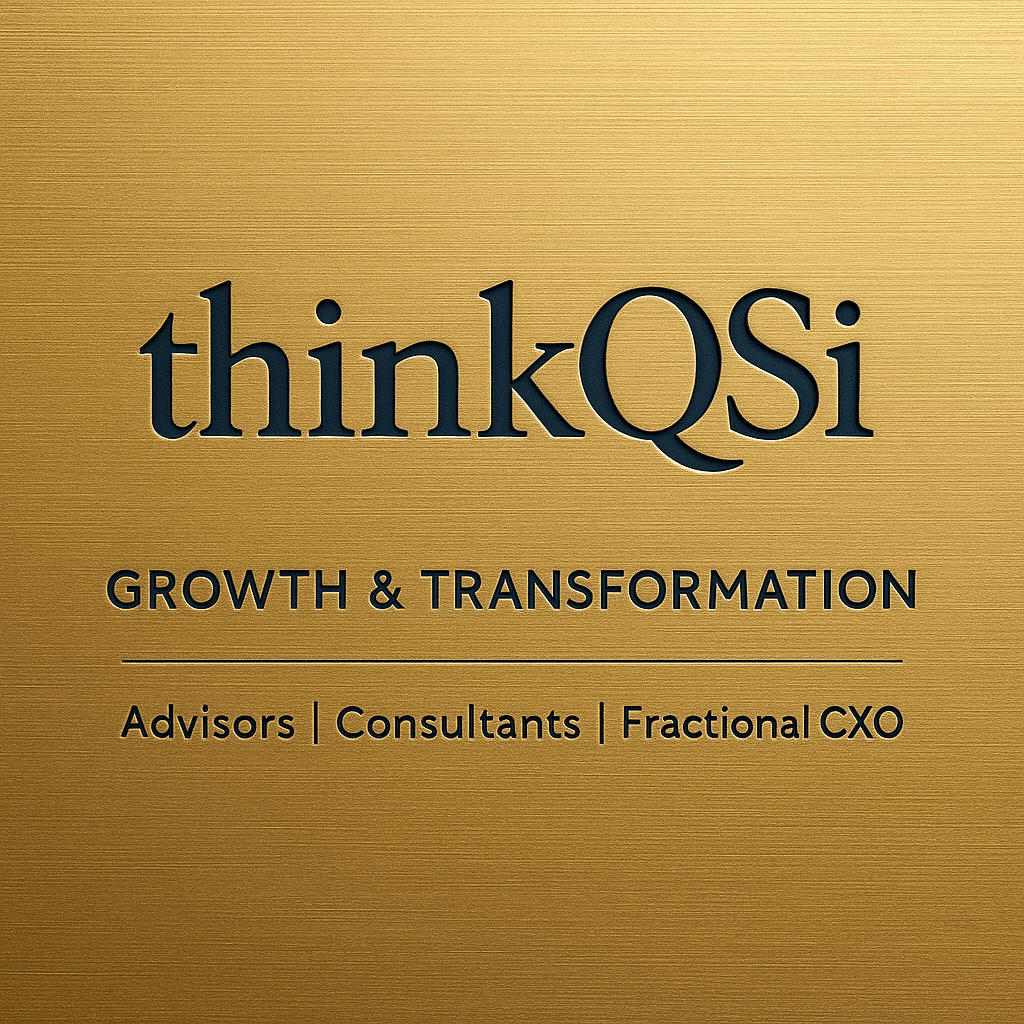Operational Audit: Why you can't afford to Ignore It?
Everyone knows about the financial audit.
It’s the annual ritual that keeps investors comfortable, accountants busy, and executives slightly nervous.
But the truth is:
A financial audit tells you what happened.
An operational audit tells you why it happened.

Most companies track the numbers, not the mechanics that create them. Yet behind every financial success—or failure—is a web of decisions, handoffs, systems, and relationships that either run smoothly or slowly strangle performance.
If your operations are in chaos, your finances will follow. Every time.
Why Operational Audits Matter
When you’re running a $10–$200 million business, you’re too big to wing it and too small to hide dysfunction.
Your people are stretched. Systems are patched together. Vendor relationships rely on a few key individuals. A couple of missed steps, a few unmeasured inefficiencies, and suddenly margins are eroding.
An annual operational audit acts like a diagnostic for the health of your business engine.
It looks beyond spreadsheets and asks:
- Are our processes efficient—or just habitual?
- Are roles clear—or overlapping and confusing?
- Are we measuring the right things—or drowning in noise?
- Are vendors partners—or transactional order takers?
Done right, an operational audit delivers three outcomes every growing business needs: Clarity, Control, and Continuity.
1️⃣ Clarity — Because Chaos Costs Money
When accountability is fuzzy, waste hides in plain sight.
That waste shows up as lost time, missed handoffs, duplicate work, and inconsistent decisions.
Case in Point: The 120-Employee Manufacturer
A $30 million plastics manufacturer was facing delivery delays and rework that quietly consumed margins.
Everyone blamed someone else—purchasing blamed production, production blamed sales, sales blamed “the system.”
When the company agreed to an operational audit, a few things surfaced fast:
- Two departments (order entry and customer service) were each maintaining their own spreadsheets to track order changes—neither of which matched.
- Purchasing was placing material orders based on old forecasts, not live demand.
- No one owned the “handoff” between scheduling and shipping.
None of this showed up in the financials directly, but it explained every late shipment and every frustrated customer.
The Fix:
- A single shared dashboard for all order changes.
- Clear role definitions for who owns approvals and handoffs.
- Sign-off checkpoints between scheduling and shipping.
Within 90 days, the company saw a 20% reduction in lead-time variability and significantly fewer order disputes.
Lesson: Chaos isn’t just stressful, it’s expensive. Clarity always pays for itself.
2️⃣ Control — Because You Can’t Fix What You Don’t Measure
Visibility is power. Yet most companies operate with dashboards that are either incomplete or ignored.
A good operational audit exposes the blind spots: untracked delays, supplier under-performance, inventory bloat, and quality escapes.
Case in Point: The $60 Million Logistics Provider
A regional logistics and 3PL company was bleeding profit on last-mile delivery. Their CFO saw costs rising but couldn’t pinpoint where.
An audit mapped the entire transportation workflow and revealed:
- No real-time visibility into shipment status—dispatchers relied on driver texts.
- Pricing for air, sea, and land contracts hadn’t been renegotiated in years.
- No consistent metrics existed for “on-time delivery by lane.”
The Fix:
- Introduced a “logistics tower” dashboard integrating all transport modes.
- Added lane-level KPIs tied to supplier scorecards.
Implemented automatic exception alerts for delays beyond 24 hours. - Within months, the company reduced logistics costs by 15%, improved on-time performance, and finally had a baseline for continuous improvement.
Lesson: If you can’t see it, you can’t fix it. Control isn’t bureaucracy—it’s visibility.
3️⃣ Continuity — Because Growth Without Stability Is Fragile
When disruption hits—market downturns, supply shocks, labor shortage, only resilient operations survive.
Continuity is about preparedness: systems that can bend without breaking.
Case in Point: The $90 Million Healthcare Supply Distributor
During the pandemic, this firm didn’t just survive—it grew.
Why? Because two years earlier, their operational audit had uncovered a dependency risk: 80% of their consumables came from one overseas supplier.
The audit recommended:
- Identifying alternate domestic suppliers.
- Building an emergency safety stock plan.
- Training procurement staff on vendor risk monitoring.
When international shipping routes froze, they switched seamlessly to alternates.
Competitors were out of stock; they were taking market share.
Lesson: Continuity doesn’t happen by luck. It’s engineered through foresight, relationships, and regular operational checkups.
Connecting the Dots
Each of these stories—manufacturing, logistics, healthcare—shares a pattern:
| Hidden Problem | Audit Discovery | Outcome |
| Blurred roles & redundant work | Lack of defined handoffs and shared data | 20% faster order processing |
| No cost visibility | Missing dashboards, outdated contracts | 15% logistics cost reduction |
| Over-reliance on single supplier | No backup sourcing strategy | Business continuity during global disruption |
Whether your business makes components, moves freight, or manages clinics, these same dynamics apply.
When operations are tuned, everything else follows: customer satisfaction, margin growth, even employee morale.
The Cost of Ignoring Operations
You can survive without an operational audit—just not efficiently.
Without clarity, decisions slow. Without control, costs creep. Without continuity, risk multiplies.
What starts as a few small leaks turns into a flood of lost opportunities.

The Case for an Annual Operational Audit
The same way financial statements tell your investors how you performed, an operational audit tells your leadership team how you can perform better next year.
- It uncovers waste before it becomes loss.
- It refreshes alignment between strategy and execution.
- It strengthens your vendor ecosystem and customer reliability.
Think of it as a yearly health check for the engine that drives your results.
Your Invitation: The ThinkQSI Operational Health Check
If you’re leading a company between $10M and $200M, with 50–200 employees, and you suspect your operations aren’t running as cleanly as they should—this is your chance to find out.

We’re offering a free Operational Health Check:
A 60-minute consultation to identify blind spots, bottlenecks, and under-utilized assets within your supply chain, logistics, and operations ecosystem.
You’ll walk away with:
- A quick diagnostic summary
- A prioritized list of improvement opportunities
- Clear next steps to start saving time and margin immediately
No obligation. No sales pitch. Just clarity.
Schedule your free Operational Health Check today at ThinkQSI.com/start
Because when your operations run right, your numbers take care of themselves.
Final Thought
Financial audits prove compliance.
Operational audits prove competence.
Do one every year—before inefficiency does it for you.
---
Insights from Anwer Qureishi, Thought Leader & Entrepreneur
Ready to accelerate growth? Schedule a Consultation with Anwer Qureishi, Founder, Q&S International (ThinkQSi).
